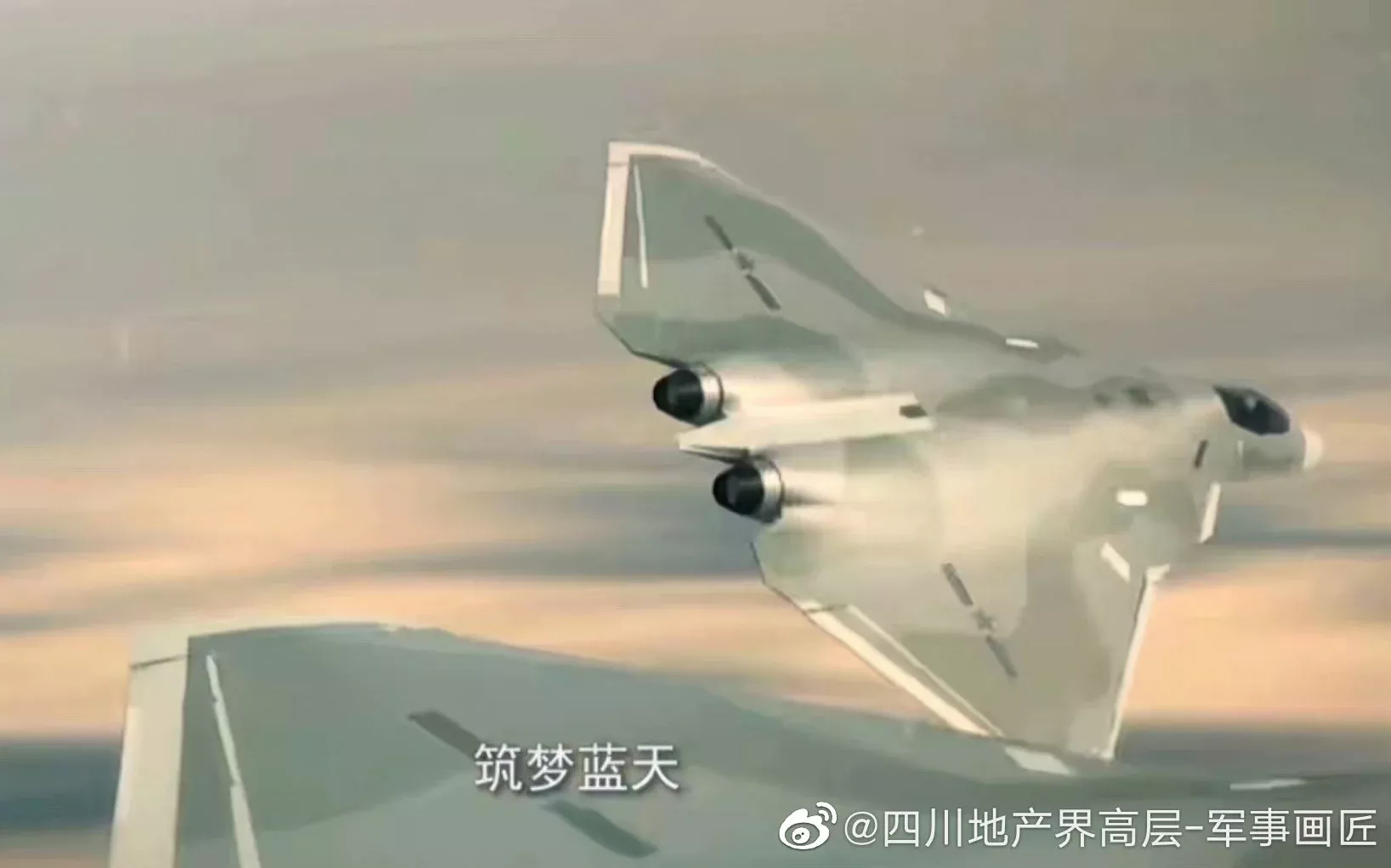Weekly Debrief: What Does A Concept Design Reveal About China’s Next Fighter?

AVIC unveiled a tailless supersonic concept design for a sixth-generation fighter.
A new official rendering of a future fighter by a Chinese aircraft manufacturer offers some insights into one of the People’s Liberation Army Air Force’s (PLAAF) prized development projects, although perhaps not in the actual details shown by the released design.
The concept design appeared in a video released Jan. 31 on AVIC’s WeChat channel, showing a formation of three apparently tailless, supersonic fighters flashing by a stationary camera high above the clouds. But the revealed design seems unlikely to produce a viable configuration, with mixed-and-matched features seemingly patterned after a J-20-style nose and wings, F-22-style caret inlets and leading edge root extensions and nonfuturistic, exposed engine nozzles.
For China’s state-owned AVIC, the release of the media itself may be the message. The sudden disclosure adds to a steady drumbeat of messaging about the long-term development project and the future of Chinese military aviation.
By any modern-day measure, China has made significant progress over the past 12 years, fielding the J-20A stealth fighter by the dozens, nearing completion of J-35 fighter development and delivering new variants of homegrown versions of the Russian Flanker series, as well as the locally developed J-10.
Such an accelerated modernization agenda seemed difficult to imagine when the J-20 was revealed in 2011. At the time, the PLAAF consisted mainly of a small number of fourth-generation J-10s, J-11s and much older JH-7s and J-8s, with each taking decades to usher into production.
With the H-20 stealth bomber due to enter service later this decade, Chinese officials are making it increasingly clear that they will continue to develop new generations of fighters. Yang Wei, chief designer of the J-20, has hinted at plans for a seventh-generation fighter to follow a sixth-generation fighter. Speaking at the Zhuhai Air Show in November, Yang invoked the fifth-generation 20-, and 30-series, and promised future generational-level series.
“In addition to upgrading the J-20 in the 20 series aircraft, there will also be new developments, as people will eventually see members in the 30-, 40- and 50-series aircraft,” Global Times quoted Yang as saying on Nov. 7.
AVIC’s newly released concept design also follows broad trends, albeit not perhaps in the specific details. A tailless aircraft has consistently appeared in AVIC presentations and other visual clues of the sixth-generation fighter. In October 2021, for example, The War Zone website reported on new commercial satellite imagery, which showed a tailless, J-20-sized fighter parked near a hangar at the Chengdu aircraft plant. The same AVIC-owned facility designed and produced the J-20. Three years earlier, a photo of a placard circulating on Chinese social media said that the Chengdu Aerospace Corp. had submitted eight proposals for the sixth-generation fighter design, of which four models had completed testing in a low-altitude wind tunnel.
China typically does not release schedule details about future weapon systems, but the sixth-generation fighter might be an exception. Wang Haifeng, chief designer at Chengdu, said in an interview that the Chinese goal is to field a new fighter by 2035.
